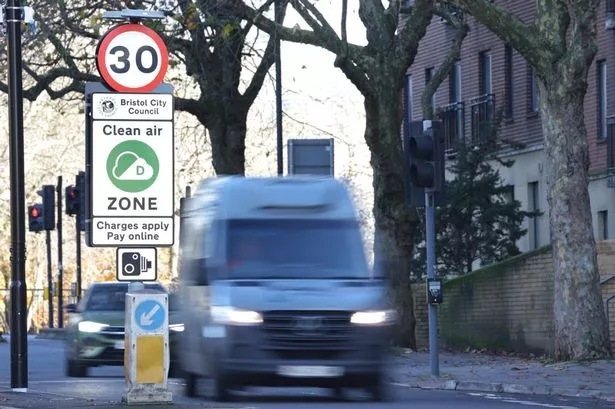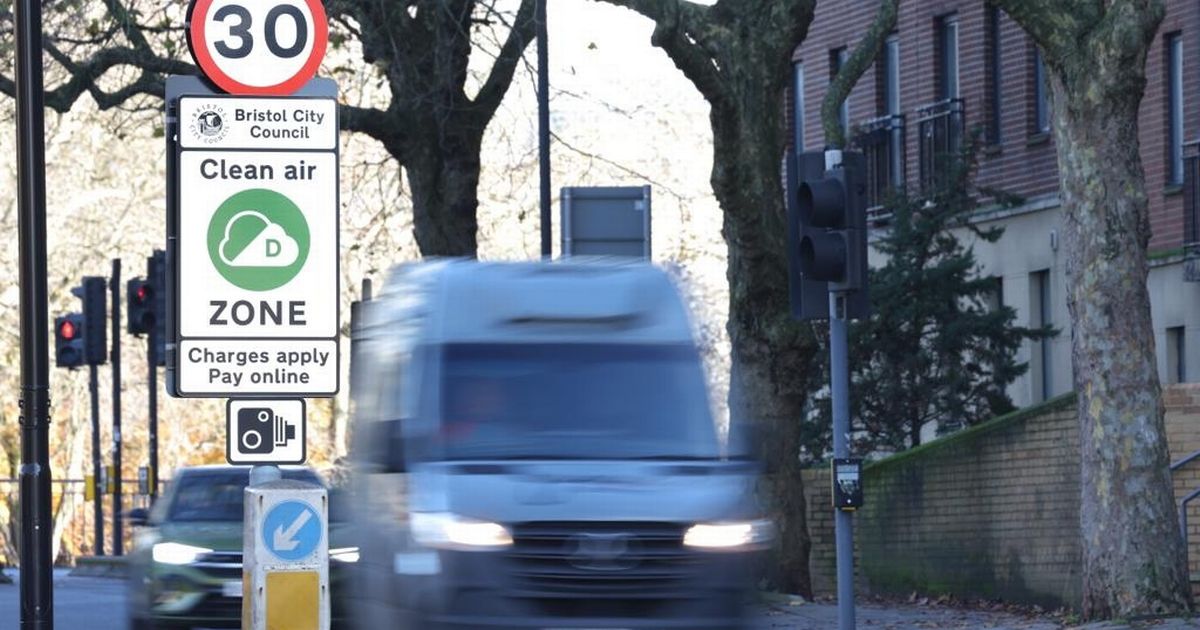The higher fee could deter drivers of non-compliant vehicles from entering the zone The Clean Air Zone covers an area around the city centre (Image: Paul Gillis/Bristol Live)
The Clean Air Zone covers an area around the city centre (Image: Paul Gillis/Bristol Live)
Drivers of some vehicles could soon have to pay £14 a day to enter the Clean Air Zone in Bristol. Since being introduced almost three years ago, pollution in the city centre has plummeted but recently progress has slowed and last year nitrogen dioxide even increased in two locations.
The Clean Air Zone covers a large area around the city centre. Drivers of particularly polluting vehicles have to pay £9 a day to Bristol City Council to enter the zone, which is then spent on providing more sustainable forms of transport like putting on new bus services.
The zone was brought in after the government raised concerns about dangerously high levels of nitrogen dioxide harming people’s health. Councillors on the environment policy committee will consider increasing the fees on Thursday, November 6. Options include £10, £12 or even £14.
A committee report said: “Rising inflation, shifts in travel behaviours, and smaller reductions in NO2 in 2024 than in 2023 suggest the current charges may no longer act as a strong deterrent. To help accelerate progress toward clean air objectives and improve public health, one option under consideration is to increase CAZ charges to encourage higher levels of compliance.
“Provisional results of the first stage of modelling show that in all increased charging scenarios, there are reduced numbers of non-compliant vehicles entering the CAZ zone. The higher the charge rate, the higher this compliance becomes.”
Without hiking the fees, council staff forecast that nitrogen dioxide levels will remain above legal limits in some parts of the city centre until 2029. Breathing in this pollutant has been linked to cardiovascular disease, respiratory illness and early death. The council would consult the public about changing the fees before any increases are rolled out.
While the first year of the Clean Air Zone saw a huge drop in pollution, last year progress slowed. Between November 2022 and December 2023, nitrogen dioxide levels dropped by 12.6 per cent inside the zone and 7.8 per cent across the wider city. Last year, levels dropped by 5.1 per cent inside the zone and 4.4 per cent outside the zone, a much smaller reduction.
The Clean Air Zone could eventually be removed, if these levels fall below 40 micrograms per cubic metre of air for a calendar year. Despite the progress, monitoring sites at Bond Street and Colston Avenue next to Zed Alley continue to record higher than legal limits. Old Market Roundabout, Rupert Street and the bottom of Park Street are also still above legal limits.
Colston Avenue and Rupert Street actually saw an increase in nitrogen dioxide levels last year. Diffusion tubes measured 48.9 micrograms at Colston Avenue in 2023 and 50.8 last year, although this is still less than before the Clean Air Zone was introduced. Tubes also measured 39.2 micrograms at Rupert Street in 2023 and 45.4 last year — both showing pollution got worse.
As well as increasing fees, replacing old buses with new electric ones could also speed up progress. Earlier this year, 74 new electric buses were rolled out in Bristol. These are much quieter than older buses and pollute the air much less.
But there are still many older buses driving around the city’s streets, which still contribute to air pollution. Financial support for people to upgrade from non-compliant vehicles will also be increased and made easier to access.
A current grant and loan scheme, for people to upgrade their cars, was limited to drivers earning less than £30,000 and working within the Clean Air Zone. This will be expanded to include all Bristol residents earning under £35,000, regardless of where they work. Also, a mobility credit scheme, helping drivers to switch from polluting cars to buses and bicycles, will be extended.
